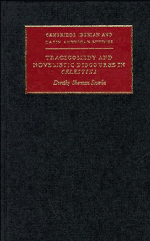Book contents
- Frontmatter
- Contents
- List of illustrations
- Preface
- Abbreviations
- 1 Introduction: Celestina and novelistic discourse
- 2 The prefatory material: the author's ambivalent intentions
- 3 Genre and the parody of courtly love
- 4 From parody to satire: clerical and estates satire
- 5 Verbal humour and the legacy of stagecraft
- 6 The rhetorical shift from comedy to tragedy: ironic foreshadowing and premonitions of death
- 7 Is Melibea a tragic figure?
- 8 Pleberio's lament, Cárcel de Amor, and the Corbacho
- 9 Conclusion: Rojas' ambivalence towards literature
- Notes
- Bibliography
- Index
- CAMBRIDGE IBERIAN AND LATIN AMERICAN STUDIES
7 - Is Melibea a tragic figure?
Published online by Cambridge University Press: 05 March 2012
- Frontmatter
- Contents
- List of illustrations
- Preface
- Abbreviations
- 1 Introduction: Celestina and novelistic discourse
- 2 The prefatory material: the author's ambivalent intentions
- 3 Genre and the parody of courtly love
- 4 From parody to satire: clerical and estates satire
- 5 Verbal humour and the legacy of stagecraft
- 6 The rhetorical shift from comedy to tragedy: ironic foreshadowing and premonitions of death
- 7 Is Melibea a tragic figure?
- 8 Pleberio's lament, Cárcel de Amor, and the Corbacho
- 9 Conclusion: Rojas' ambivalence towards literature
- Notes
- Bibliography
- Index
- CAMBRIDGE IBERIAN AND LATIN AMERICAN STUDIES
Summary
With the figure of Melibea, the medieval Christian reader of (or listener to) Celestina is presented with a genuine dilemma. Unlike Calisto, Melibea does not seem to be a parodic figure, although she too has her roots in the traditions of courtly love. As we have seen, she is an informed reader of Cárcel de Amor. But she is also a psychologically convincing portrait of a young woman who falls madly in love to the point of perdition. She resists Calisto's advances vehemently in the first act, but subsequently falls under the spell of Celestina and Calisto. Although Melibea's love for Calisto may be explained by her character, Celestina's magic spell may indeed be an effective one; P. E. Russell has shown convincingly that the spell cast by Celestina comes straight from contemporary witchcraft practices. Celestina draws a magic circle and pours oil over a skein of thread while performing her enchantments. She takes this thread to Melibea's house where she sells it to the girl and in return extracts a piece of Melibea's clothing, her girdle, under the pretence that it will help cure Calisto of a toothache, a typical lover's malady. Celestina has worked a philocaptio enchantment, capturing the will of the love object, and the skein is its instrument. The item of the victim's clothing completes the enchantment. Thus Melibea's will may be imprisoned by Celestina, which effectively removes her from blame for her sin in a Christian sense.
- Type
- Chapter
- Information
- Tragicomedy and Novelistic Discourse in Celestina , pp. 95 - 104Publisher: Cambridge University PressPrint publication year: 1989



